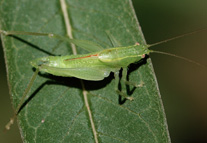Abstract
For over 25 years an undescribed Tanypodinae (Diptera: Chironomidae) has been known to dominate the lotic invertebrate assemblage associated with long-term polluting mine adits in Captains Flat, on the Molonglo River, southern New South Wales, Australia. Although known in all life stages, it has been impossible to allocate the species to any described genus. Renewed interest in the taxonomy of the Tanypodinae, particularly associated with molecular investigations and pollution indicator status warrants formal description. All stages conform to tribe Pentaneurini, but each life stage differs in morphological resemblance. Yarrhpelopia Cranston gen. n. is proposed for the taxon previously referred to under the informal code name of 'genus A'. The genus name derives from south-east Australian aboriginal word yarrh, in recognition of its core distribution and presence in flowing waters. A single species, A. norrisi Cranston sp. n., is described, acknowledging the late Professor Richard Norris, an influential Australian limnologist. Larvae dominate the benthos immediately adjacent to mine adits that continue to leach heavy metals (zinc, cadmium, copper and lead) into downstream sediments. A wider distribution includes cleaner near pristine, eastern Australian rivers between 30° and 42°S, but these records are excluded from the type series pending molecular insights into species limits.
References
Ashe, P. & O’Connor, J.P. (2009) A World Catalogue of Chironomidae (Diptera). Part 1. Buchonomyiinae, Chilenomyiinae, Podonominae, Aphroteniinae, Tanypodinae, Usambaromyiinae, Diamesinae, Prodiamesinae and Telmatogetoninae. Irish Biogeographical Society & National Museum of Ireland, Dublin, 445 pp.
Atkins, L.G. (1981) The use of freshwater mussels (Mollusca, Pelecypoda) as monitors of heavy metals in inland waters. M.Ag.Sci. thesis, LaTrobe University, Melbourne, 199 pp.
Cranston, P.S. (1996) Identification Guide to the Chironomidae of New South Wales. AWT Identification Guide Number 1. Australian Water Technologies Pty Ltd., West Ryde, NSW,
Cranston, P.S. (2000) Three new species of Chironomidae (Diptera) from the Australian Wet Tropics. Memoirs of the Queensland Museum, 46 (1), 107–127.
Cranston, P.S. (2012) Some proposed emendations to larval morphology terminology. Chironomus, 25, 35–38.
https://doi.org/10.5324/cjcr.v0i25.1540Cranston, P.S. (2013) The larvae of the Holarctic Chironomidae (Diptera: Chironomidae)—2. Morphological terminology and key to subfamilies. In: Andersen, T., Cranston, P.S. & Epler, J.H. (Eds.), Chironomidae of the Holarctic Region: Keys and diagnoses. Part 1. Larvae. Insect Systematics and Evolution Supplements, 66, pp. 13–24.
Cranston, P.S., Hardy, N.B. & Morse, G.E. (2011) A dated molecular phylogeny for the Chironomidae (Diptera). Systematic Entomology, 37, 172–188.
https://doi.org/10.1111/j.1365-3113.2011.00603.xCranston, P.S. & Epler, J. (2013) 5. The larvae of Tanypodinae (Diptera: Chironomidae) of the Holarctic region. Keys and diagnoses. In: Andersen, T., Cranston, P.S. & Epler, J.H. (Eds.), Chironomidae of the Holarctic Region: Keys and diagnoses. Part 1. Larvae. Insect Systematics and Evolution Supplements, 66, pp. 39–136.
Fittkau, E.J. (1962) Die Tanypodinae (Diptera: Chironomidae). (Die tribus Anatopynyiini, Macropelopiini und Pentaneurini). Abhandlungen zur LarvenSystematik der Insekten, 6, 1–453.
Fittkau E.J. & Murray, D.A. (1986) The pupae of Tanypodinae (Diptera: Chironomidae) of the Holarctic region. Keys and diagnoses. Entomologica scandinavica Supplement, 28, 31–113.
Freeman. P. (1961) The Chironomidae (Diptera) of Australia. Australian Journal of Zoology, 9, 611–737.
https://doi.org/10.1071/ZO9610611Krosch, M., Cranston, P.S., Bryant, L., Strutt, F. & McCLuen, S. (2017) Towards a dated molecular phylogeny of the Tanypodinae (Chironomidae, Diptera). Invertebrate Systematics. [in press]
Marasinghe Wadige, C.P.M. (2014) Use of the freshwater bivalve Hyridella australis as a biomonitor to assess the bioavailability and toxicity of metal contaminated sediments in the Molonglo River, NSW, Australia. Unpublished PhD thesis, University of Canberra, Canberra, 280 pp.
Murray, D.A. & Fittkau, E.J. (1989) The adult males of Tanypodinae (Diptera: Chironomidae) of the Holarctic region. Keys and diagnoses. In: Wiederholm, T. (Ed.), Chironomidae of the Holarctic region. Keys and diagnoses. Part 3. Adult males. Entomologica Scandinavica Supplement, 34, pp. 37–123.
Norris, R.H. (1986) Mine waste pollution of the Molonglo River, New South Wales and the Australian Capital Territory: effectiveness of remedial works at Captains Flat mining area. Australian Journal of Marine and Freshwater Research, 37, 147–157.
https://doi.org/10.1071/MF9860147Roback, S.S. (1982) The immature stages of some Australian Tanypodinae (Diptera) with some notes on the adults. Journal of the Australian Entomological Society, 21, 147–160.
https://doi.org/10.1111/j.1440-6055.1982.tb01783.xSæther, O.A. (1980) Glossary of chironomid morphology terminology (Diptera, Chironomidae). Entomologica Scandinavica Supplement, 14, 1–51.
Silva, F.L. & Ekrem, T. (2016) Phylogenetic relationships of nonbiting midges in the subfamily Tanypodinae (Diptera: Chironomidae) inferred from morphology. Systematic Entomology, 41, 73–92.
https://doi.org/10.1111/syen.12141

